CRICK LEATHERLANDS
Crick Village
Crick is three miles from Clay Coton. There are old bridleways (ancient rural lanes) between Crick and Yelvertoft and between Crick and Kilsby. The Crick to Kilsby bridleway is probably 500 years old and was originally a sheep drover's route. It passes beneath the M1 and the West Coast Main Line railway, rising uphill from Kilsby, passing the ventilation shafts of the Kilsby railway tunnel and then descending towards Crick.
Crick lies to the east of the M1 and the railway. It is also close to the Grand Union Canal. Indeed Crick's main claim to fame these days is the Crick Boat Show held in late May at Crick Marina.
Crick's parish church is St Margaret of Antioch, parts of which date back to the 12th century. The church is believed to be built on the site of a Saxon church. Various additions were made in the 13th and 14th centuries. In the 1840s it was restored and "re-pewed". The church contains and still uses the organ built for the Chapter Royal at St James’ Palace in 1842. In 1926 when the floor was relaid in the sanctuary, a late 12th century stone effigy was discovered. The most famous rector of Crick was William Laud who later became Archbishop of Canterbury and was executed during the Civil War.
County Directories are an excellent source of information on nineteenth century towns and villages. Many directories include lists of notable residents / local tradesmen, and information which helps to build up a picture of the village at the time. For example, Crick features in the 1847 Post Office Directory for Northamptonshire. This tells us that Crick had 1,006 inhabitants in 1841, that the incumbent of St Margaret's Church was the Rev Charles Swainson, that a village school was endowed by William Hemfray with a bequest of £10 per annum for the education of 12 poor children, and that in 1806 Richard Rayson bequeathed £15 a year for the education of 20 children. These sums were being paid to a schoolmaster for the use of a schoolroom, house and garden. The Directory mentions Crick and Welton railway station, 3 miles from the village.
The Post Office Directory lists seven inhabitants described as "Gentry" (inluding Rev Swainson) and 50 traders. These traders give an interesting picture of the make up of the village. They include : William Blaney master of the National School, a number of farmers, two blacksmiths, a shoemaker, a wheelwright, a watchmaker, one surgeon (plus a junior surgeon), two bakers, a butcher. Several of the traders have multiple occupations, for example Edward Whitnell is a "grocer, draper and maltster", Benjamin Rowley runs the Grand Union Inn but is also a lime and coal merchant, John Foster is a "farmer, grazier and brick burner", and William Haddon who runs the Royal Oak is also a cabinet maker.
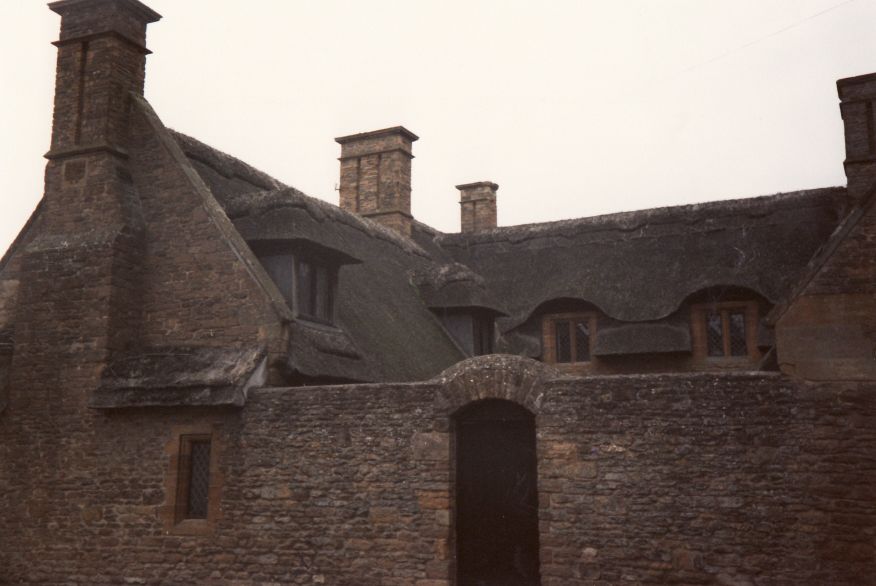
Vintners Manor, Crick (originally built 1650s, much altered in the 1920s) - said to have medieval vaulted cellars
Edward the Weaver
We know quite a lot about Edward Leatherland, son of Edward and Esther. In 1763 he aged 23 was admitted to Northampton Hospital. In the 1777 Militia List he was a weaver in Crick. Edward married Sarah Palmer in 1781 in East Haddon. He was 42, Sarah was 32. There is no evidence that they had children.
Weavers in the late eighteenth century could become quite prosperous. Both Edward and his wife Sarah made wills in 1814 shortly before they died. They left their house to each other and the rest of their estate to nieces and friends. The nieces were relatives on Sarah’s side. Their estates included a house, two tenements and £280. £280 in 1814 was equivalent to around £15,000 today (using prices indexes) or £179,000 (using average earnings). And when probate was granted Edward’s estate was valued at £450.
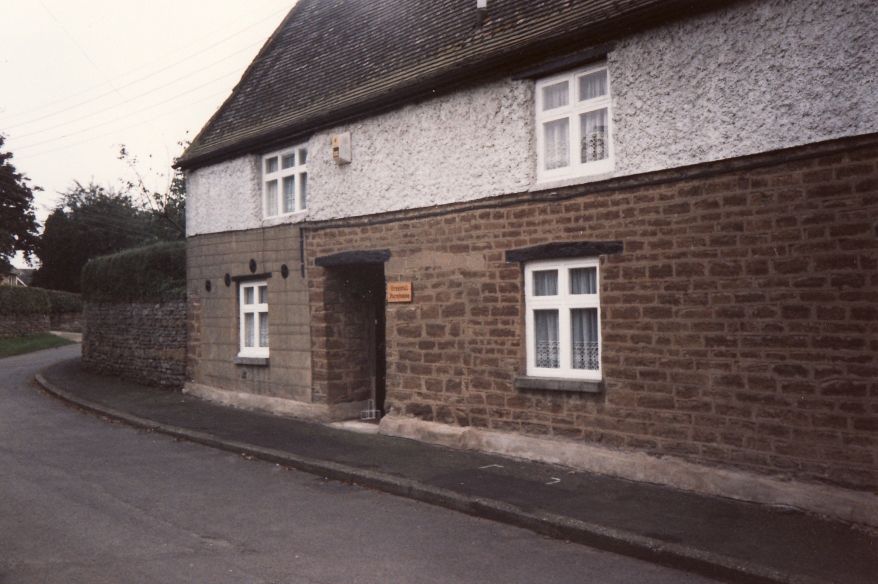
Greenhill Farmhouse, Crick
The Leatherlands are distantly related to the Redgrave acting family. The link is via Esther Watts who had a brother-in-law John Redgrave. The Redgraves originated in Crick. The 1777 Militia list for Crick includes two farmers / farmers’ sons called Thomas and Valentine Redgrave who were ancestors of the Redgraves.
William Leatherland and his Affair with Eliza Clark
William was the second son of Edward and Esther. He was baptised on 20 February 1737 in Crick. In the Northamptonshire Militia list for 1777 he is probably the “William Leathardlond” labourer living in Kilsby. I have not traced any marriage but in 1764 when he was 27 years old he fathered a son, William, baptised in Crick, described in the parish register as "son of William Leatherland and Eliza Clark" indicating that they were not married. The child may of course have been known as William Clark, not Leatherland. Eliza seems to have had another illegitimate son, another William, baptised in Crick in 1778.
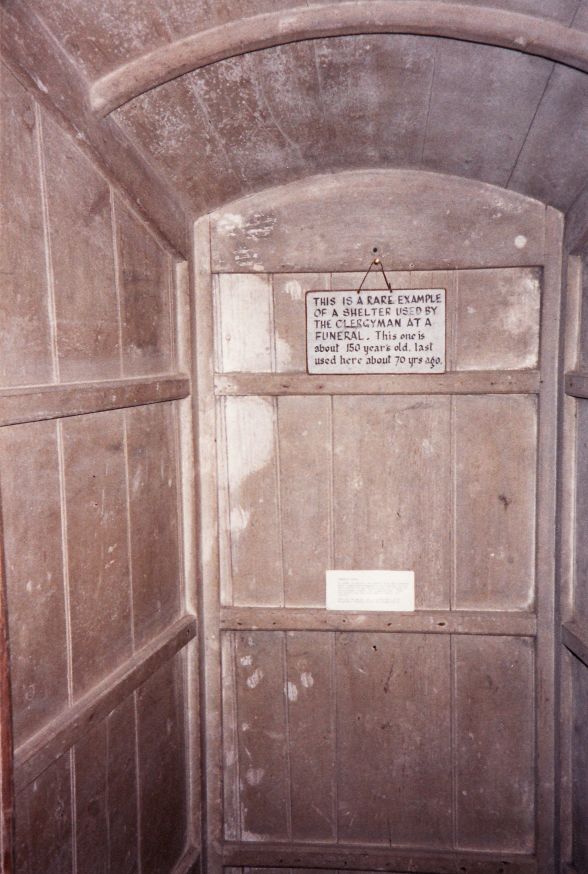
Doorway / clergyman's shelter in St Margaret's church, Crick
The Northants Militia list of 1777 for Crick reinforces the impression that weaving dominated the village. Crick was much larger than Clay Coton, its miltia list has 188 men between the ages of 18 and 45. We also know from the 1801 census (which listed the numbers of people in each village but did not give names) that the population of Crick was 961. The Militia List includes Edward Leatherland a weaver, mentioned earlier. There are thirty four farmers and farmers' sons including some names which crop in the Leatherland family tree such as Watts, Whitmell, and Redgrave.
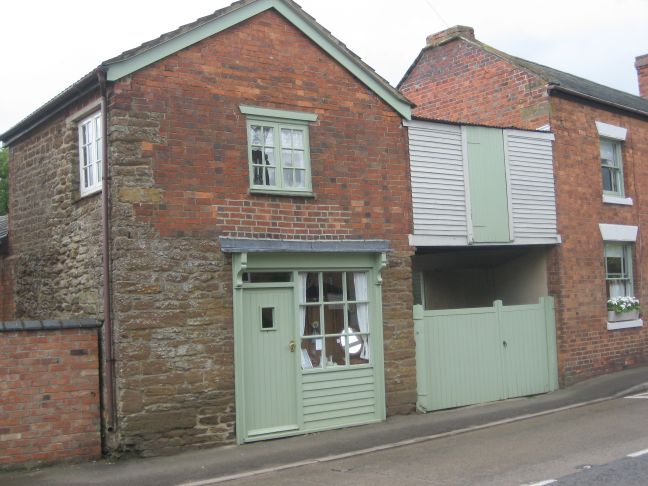
The striking feature of the Crick list is the dominance of textile workers. There are 44 weavers in the village. There are also a number of other textile workers : two glovers (one with the wonderful name of Packer Gudgin), four woolcombers, a collarmaker, two staymakers, and two cordwainers. There is also a man called John Iliff who was a "hog-gobler" - a gobbler is apparently a male turkey and a hog a pig, although I'm not entirley sure what a hog gobler did ! The Crick militia list goes on to list a baker, a miller, a tailor, a wheelwright (who made wheels for carts), a mason, and a cooper (who made barrels and casks). The other main occupation in Crick in 1777 is servants - twenty are listed, including an apprentice wheelwright and an apprentice joiner.
Militia lists also list men who were too ill to serve in the militia. In Crick there were two men described as "non compos mentis", a farmer "disabled in the thigh by being broke", a woolcomber who was hard of hearing, a man blind in one eye, a soap boiler who was disabled by a broken leg, a rheumatic weaver, one deaf and dumb man, one who was "lame on the left hand", and several men with defective eyesight.
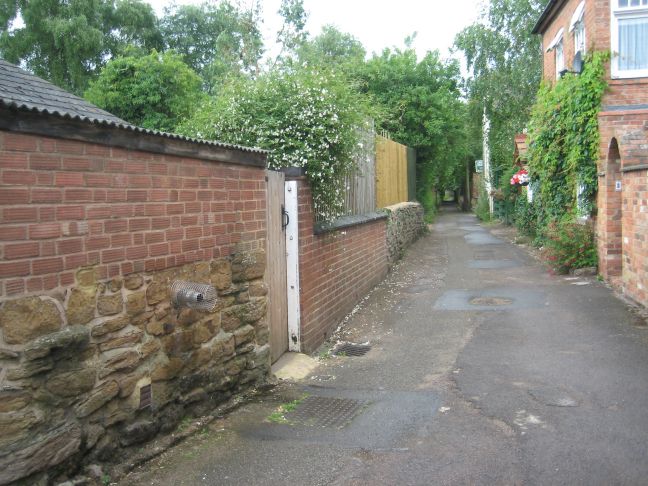
An old lane in Crick
The William Leatherland / William Clark Problem
A boy called William was baptised on in May 1764 in Crick, son of William Leatherland and Eliza Clark. I used to assume that the boy was known as William Leatherland, but it probably more likely that he was known as William Clark.
In 1783 a William Leatherland married Ann Hall in Kilsby. If he was the boy baptised in 1764 he would have been 19 when he married, which is younger than the age at which most men married. William and Ann had at least two children, although one died in infancy. Ann died in 1801 and two years later, William married Jane Daniel in Kilsby and they had nine children the last of whom was baptised in 1822. If this is the William baptised in 1764, he would have been 58 years old when his last child was born in 1822 which is quite possible but raises some doubts.
A William Leatherland was buried in Kilsby aged 69 in 1830. This would mean he was born in 1761. This might be the William baptised in 1764 as ages at death are not always accurate.
However, there are other William Leatherlands both descendants of the Clay Coton Leitherlands who may be the one who married Ann Hall and then Jane Daniel :
- A William Leatherland who was baptised in Watford in 1760, son of William and Rebecca. This would fit better with the William Leatherland buried in Kilsby in 1830 aged 69.
- A William Leatherland who was baptised in 1765 in Little Addington, Northants, son of John and Hannah.